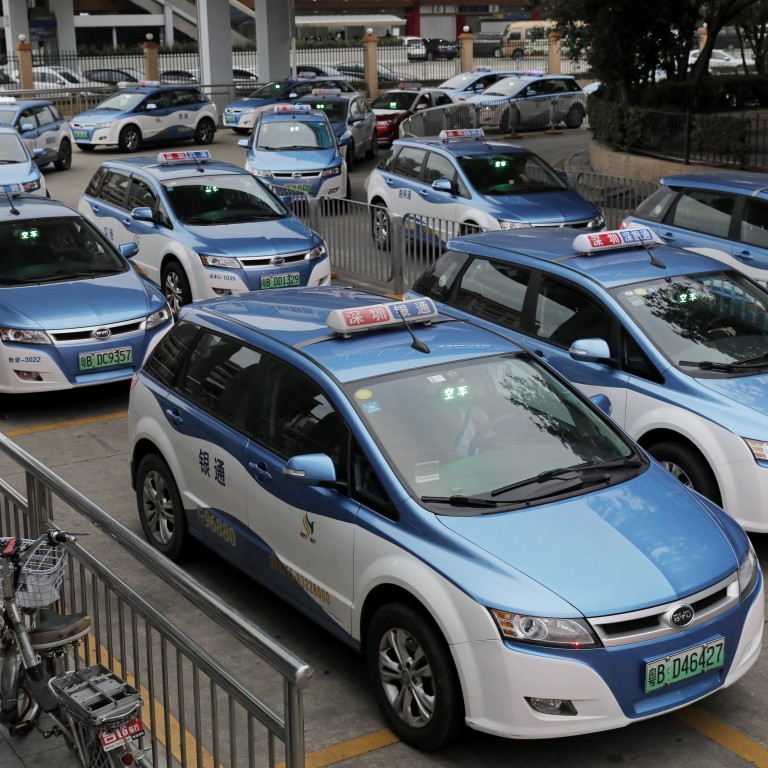
Hi-tech Shenzhen charges ahead in China with all-electric taxi fleet
- City gives up on petrol to be the biggest in the country to have almost all of its cabs powered by electricity.
One of China’s major cities has reached an environmental milestone: an almost entirely electric-powered taxi fleet.
The hi-tech hub of Shenzhen in southern China announced at the start of this year that 99 per cent of the 21,689 taxis operating in the city were electric.
Last year, it still had 7,500 petrol-powered taxis on the roads. A few can still be found, but electric ones far outnumber them.
The metropolis of 12.5 million is the second – and biggest – to achieve this feat in China. Taiyuan, in the country’s north with a population of 4.3 million, has had only electric taxis since 2016.
China’s war on pollution just got more complicated
Shenzhen “has taken the lead among major Chinese cities”, said Cui Dongshu, the secretary general of the China Passenger Car Association.
Shenzhen’s bus fleet has been all-electric since 2017. The Shenzhen Municipality Transport Committee said the city was one of 13 pilot centres promoting alternative-energy public transport to cut smog and develop the alternative energy industry.

Beijing and other Chinese cities are served by legions of electric scooters, bicycles and three-wheeled delivery vehicles that help reduce emissions – and sometimes startle pedestrians with their near-silent operation.
Shenzhen’s 20,000-plus electric taxis would reduce carbon emissions by about 850,000 tonnes a year, the city’s transport committee said. However, the all-electric initiative does not include ride-hailing and ride-sharing services, which are popular in China.
Providing places to recharge taxis has been a big hurdle since Shenzhen rolled out its first 100 electric cabs in 2010. Cui praised the city for its network of about 20,000 public charging stations, which he said should be enough to meet most of the demand.
Diesel trucks in cross hairs as China looks to reduce emissions
The electric taxis are equipped with an on-board terminal that tells drivers where taxis are in short supply, such as the airport, railway station or other locations. It also clearly displays the fare and the taxi’s route, which the Shenzhen transport committee said would help prevent drivers from overcharging or taking a roundabout route.
Shenzhen, which borders Hong Kong, is home to Huawei Technologies and a host of other Chinese technology companies.

